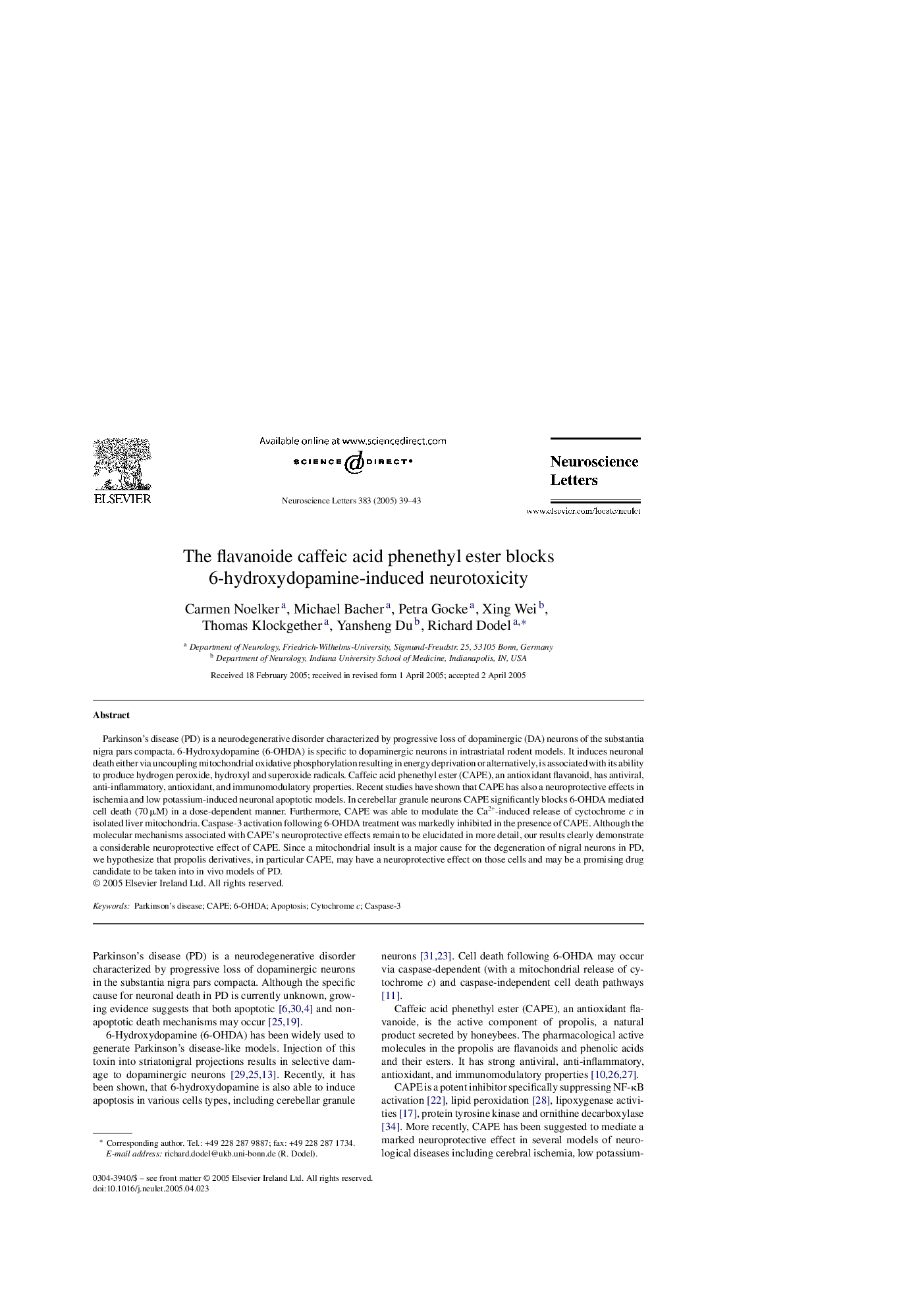| کد مقاله | کد نشریه | سال انتشار | مقاله انگلیسی | نسخه تمام متن |
|---|---|---|---|---|
| 9429190 | 1615201 | 2005 | 5 صفحه PDF | دانلود رایگان |
عنوان انگلیسی مقاله ISI
The flavanoide caffeic acid phenethyl ester blocks 6-hydroxydopamine-induced neurotoxicity
دانلود مقاله + سفارش ترجمه
دانلود مقاله ISI انگلیسی
رایگان برای ایرانیان
کلمات کلیدی
موضوعات مرتبط
علوم زیستی و بیوفناوری
علم عصب شناسی
علوم اعصاب (عمومی)
پیش نمایش صفحه اول مقاله

چکیده انگلیسی
Parkinson's disease (PD) is a neurodegenerative disorder characterized by progressive loss of dopaminergic (DA) neurons of the substantia nigra pars compacta. 6-Hydroxydopamine (6-OHDA) is specific to dopaminergic neurons in intrastriatal rodent models. It induces neuronal death either via uncoupling mitochondrial oxidative phosphorylation resulting in energy deprivation or alternatively, is associated with its ability to produce hydrogen peroxide, hydroxyl and superoxide radicals. Caffeic acid phenethyl ester (CAPE), an antioxidant flavanoid, has antiviral, anti-inflammatory, antioxidant, and immunomodulatory properties. Recent studies have shown that CAPE has also a neuroprotective effects in ischemia and low potassium-induced neuronal apoptotic models. In cerebellar granule neurons CAPE significantly blocks 6-OHDA mediated cell death (70 μM) in a dose-dependent manner. Furthermore, CAPE was able to modulate the Ca2+-induced release of cyctochrome c in isolated liver mitochondria. Caspase-3 activation following 6-OHDA treatment was markedly inhibited in the presence of CAPE. Although the molecular mechanisms associated with CAPE's neuroprotective effects remain to be elucidated in more detail, our results clearly demonstrate a considerable neuroprotective effect of CAPE. Since a mitochondrial insult is a major cause for the degeneration of nigral neurons in PD, we hypothesize that propolis derivatives, in particular CAPE, may have a neuroprotective effect on those cells and may be a promising drug candidate to be taken into in vivo models of PD.
ناشر
Database: Elsevier - ScienceDirect (ساینس دایرکت)
Journal: Neuroscience Letters - Volume 383, Issues 1â2, 22â29 July 2005, Pages 39-43
Journal: Neuroscience Letters - Volume 383, Issues 1â2, 22â29 July 2005, Pages 39-43
نویسندگان
Carmen Noelker, Michael Bacher, Petra Gocke, Xing Wei, Thomas Klockgether, Yansheng Du, Richard Dodel,